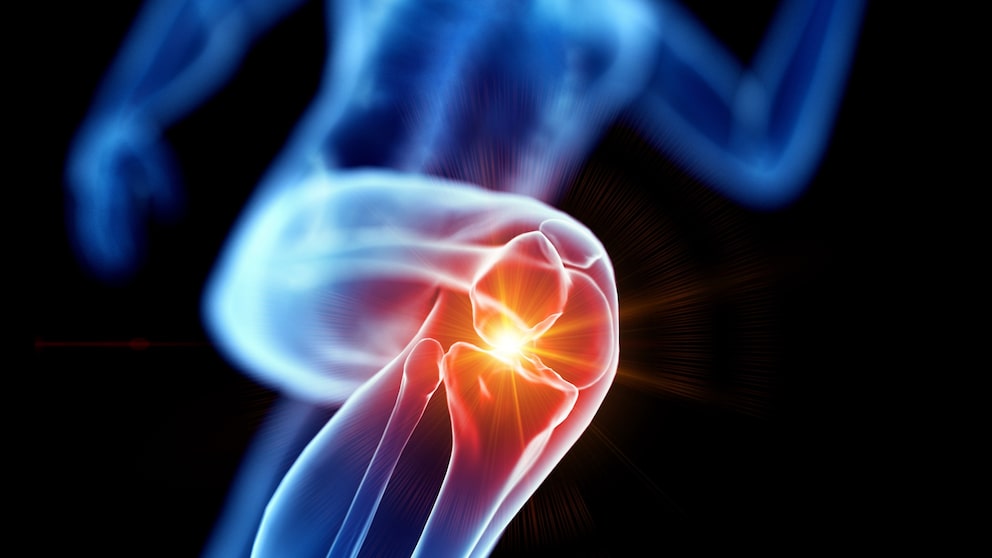May 7, 2025, 5:39 pm | Read time: 2 minutes
After just a few miles, the knee locks up—many amateur runners are familiar with this issue. Here’s what causes the typical pain, usually felt on the outside of the joint, who is most at risk, and how to get rid of “runner’s knee.”
Jogging isn’t enjoyable with a sore knee. The cause might be what’s known as runner’s knee (also called ITBS = iliotibial band syndrome). It results from the overuse of a fascia (iliotibial tract) that runs along the side of the knee from the thigh. An orthopedist explains how to prevent runner’s knee.
Overview
Weak Thigh, Hip, and Pelvic Muscles are the Most Common Cause
This overuse can have various causes. Most commonly, it’s due to weak thigh, hip, and pelvic muscles, explains orthopedist Dr. Patrik Reize to FITBOOK. He is the medical director of the Sports Clinic, Trauma Surgery, and Orthopedics at Klinikum Stuttgart. “This causes the hip to drop on the opposite side while running, leading to overstretching of the tractus.” The result: sharp pain on the outside of the knee.
Bowlegs or Knock-Knees Can Promote Runner’s Knee
Bowlegs or knock-knees could also promote the development of runner’s knee, says Reize. Additionally, misalignments in the foot area and worn-out running shoes can be causes. “Then the sole compresses, leading to an imbalance when the foot strikes,” explains the medical director of the Clinic for Orthopedics and Trauma Surgery at Klinikum Stuttgart.
Affected Individuals Develop Additional Misalignments
The problem with runner’s knee: The tractus usually doesn’t tear, according to the expert. But chronic overstretching causes it and surrounding tendons to lose elasticity and dampen less effectively. “And you develop additional misalignments to avoid the pain. So it should be taken seriously,” says Reize.

Where Runner’s Knee Comes From and How to Get Rid of It

The Impact of Iron Deficiency During Menopause

The Best Diet for Faster Recovery After Training
How to Get Rid of Runner’s Knee?
What helps? First, appropriate and not overly worn-out footwear. With targeted training, runners should strengthen the muscles around the thighs and hips, stabilizing the musculoskeletal system. Insoles are an option for possible foot misalignments. A treadmill analysis can provide more precise insights. “You should pull out all the stops to get rid of it,” says Reize. Orthopedists can determine if there are abnormalities in gait, leg length, or the foot that are responsible for the pain.
Those with athletic ambitions can consult a physiotherapist specializing in athletes in case of runner’s knee. “They focus more on muscles, tendons, and fascia,” says Reize. Massages, warming ointments, or electrotherapy are also conceivable, according to the orthopedist.

